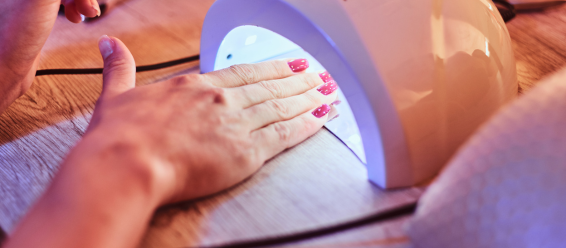Press Release
Apr 14, 2023
Dermatologists reiterate artificial nails warning and risk of at-home kits

The British Association of Dermatologists (BAD) has today reiterated its warning regarding allergic reactions linked to artificial nails following a number of high-profile reports. The BAD first issued a warning about these products in 2018, following reports of a steep rise in cases of allergic skin reactions linked to (meth)acrylate chemicals in these products.
There are concerns that the closure of nail salons during the pandemic may be contributing to more people switching to at-home kits which can be riskier, due to the lack of experience the public has with these products.
It is when the uncured products come into contact with any part of the skin that sensitisation to the chemicals can occur. This is very likely when people apply a product themselves, or if insufficient training has been given to the nail technician.
Additionally, if the product isn’t cured sufficiently then this can increase the risk of an individual developing an allergy.
Latex and vinyl (PVC) gloves provide no protection from these chemicals, which will penetrate them immediately.
Dr Deirdre Buckley of the British Association of Dermatologists said:
“It’s important that people are aware of the potential risks of artificial nail products, whether they are having them applied in a salon or at home. Nail technicians are particularly at risk and should wear nitrile gloves when applying the products, changing them every thirty minutes with a no-touch technique.
“It’s likely that lockdowns during the pandemic contributed to an increase in people using at-home artificial nail kits. If you are using these products at home then make sure you read the instructions and always use the recommended UV lamp for curing. Do not use the same lamp with other polishes purchased separately. It’s very important that you avoid direct skin contact with the nail product whilst it is curing.’’
‘’Many people are unaware of potential medical and dental implications if they become sensitised to nail methacrylates. The same or very similar methacrylates are used in white dental fillings, enamel tooth coatings, orthopaedic bone cement, diabetic glucose sensors and insulin pumps. This can have serious consequences for future medical care.’’
Artificial nail types
Gel nails are derived from (meth)acrylates that can be applied over the natural nail or used to sculpt extensions. The gel needs to be ‘cured’ or hardened under a UV (ultraviolet) lamp. It cannot be removed by soaking and must be buffed off from the nail.
Acrylic nails are mixed in the salon; the paste is applied over a natural nail or used to create length by adding tips. It is then left to harden with exposure to air. Acrylic nails are recommended to be removed by soaking in acetone.
Gel polish, possibly becoming the most popular of the three options, is a premixed product and a hybrid of gel and nail varnish. It has a similar consistency to nail polish and is applied in a similar way. Once applied it also requires ‘curing’ (hardening) with the use of a UV lamp. Gel polish is recommended to be removed by soaking in acetone.